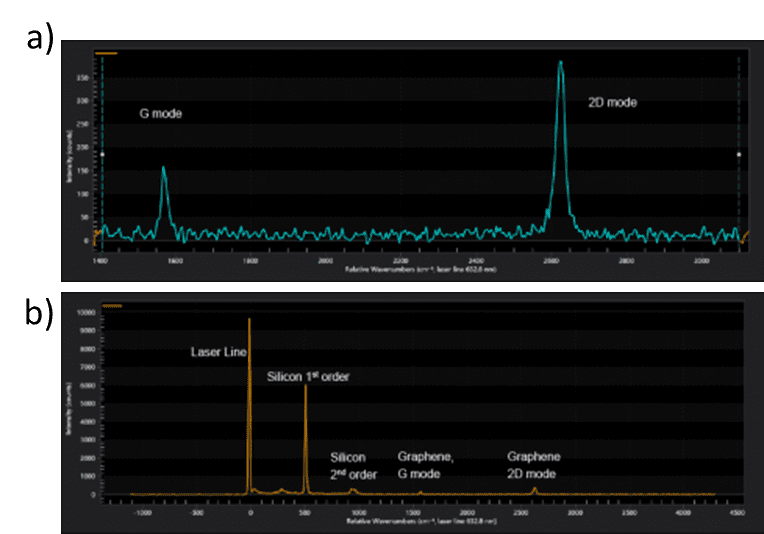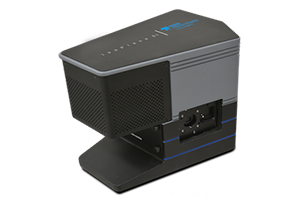Professor Dr. Ping-Heng Tan
Institute of Semiconductors, Chinese Academy of Sciences, CN
Background
Prof. Dr Ping-Heng Tan’s research at the Chinese Academy of Sciences in Beijing focuses on the optical properties of two-dimensional layered materials. This also includes related heterostructures, nanocarbon materials, and novel low-dimensional semiconductor materials.

Figure 1: (a) shows first and second order Raman spectra of graphene acquired via the homemade micro-Raman module with FERGIE (IsoPlane 81) system for confocal Raman spectroscopy. An He-Ne laser was used in the experiment. (b) Shows FERGIE’s capability to yield very broad spectra in a single capture, owing to its short focal length, which is highly useful for both Raman and fluorescence experiments.
Challenge
His group use Raman spectroscopy to analyze the fabricated monolayer of graphene on a silicon substrate. This allows them to characterize and distinguish the crystal structure of typical materials.
Accurate analysis of these structures is key to differentiate between the G and 2D modes of graphene, two dominant Raman modes of folded graphene layers. Changes in these peaks offers information about the graphene monolater and it’s structure.
Therefore, a sensitive and highly accurate Raman system is required.
Although small, FERGIE (IsoPlane 81) has good sensitivity. Raman spectra of graphene and silicon can be obtained by this smart system combined with a homemade micro-Raman module.
Solution
His group found that the high sensitivity of the IsoPlane 81 allowed for detection of Raman spectra of both dominant Raman modes of graphene.
Due to it’s aberration-free performance, Prof. Dr. Tan found that the IsoPlane 81 can be used to detect photoluminescence signal in a very broad spectral range for each capture with high sensitivity. Yet, it is sensitive enough to obtain Raman spectra characterizing the crystal structure.
The group also found that the IsoPlane 81 provided a bridge between a professional Raman spectrometer and a handheld spectrometer, working as both a standard scientific lab and a field workstation.

